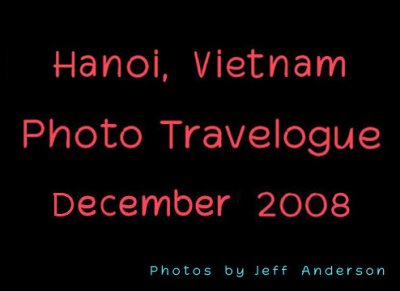
Hanoi Vietnam cover page. |
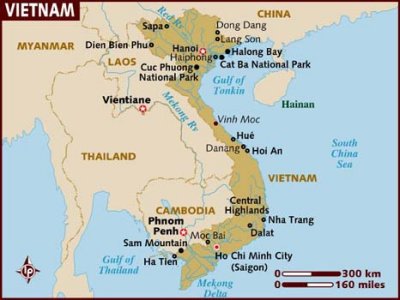
Map of Vietnam with the star indicating Hanoi. |
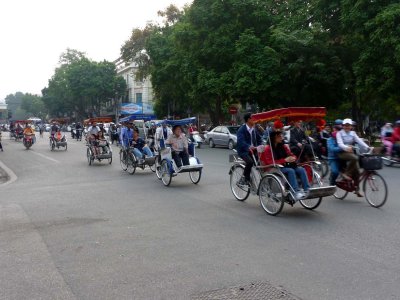
My first experience in Hanoi was to go on a cyclo ride around the Old Quarter streets. |
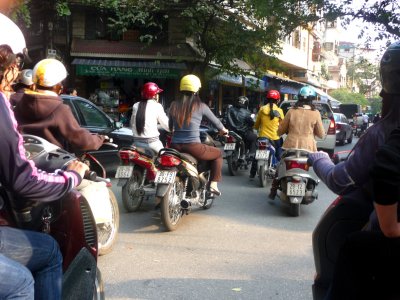
The cyclo driver rode me through motorbike traffic in Hanoi. The ride was exhilarating, but the exhaust fumes were terrible! |
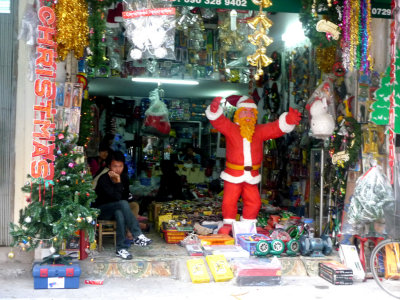
Santa Claus on display since it was December in Hanoi. |
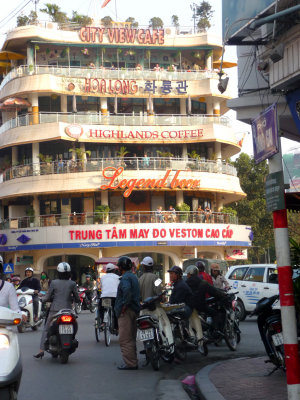
An interesting cafe and coffee house in downtown Hanoi. |
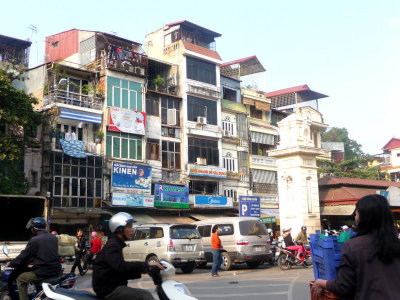
A typical Hanoi apartment building. |
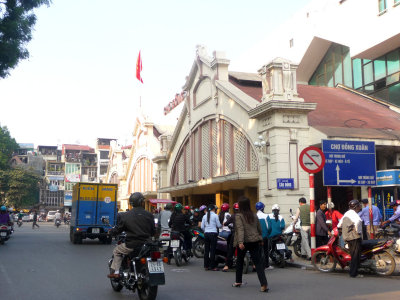
We passed by the famous Cho Dong Xuan market in Hanoi. |
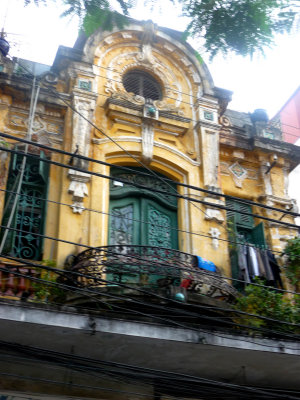
A French colonial looking apartment building in the Old Quarter section. |
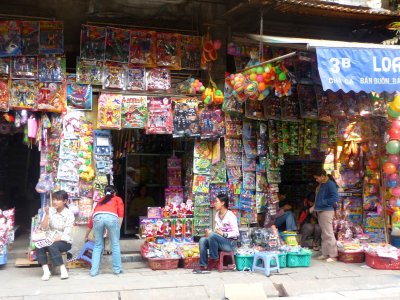
One of many shops we passed by in Hanoi. Capitalism has taken hold there! |
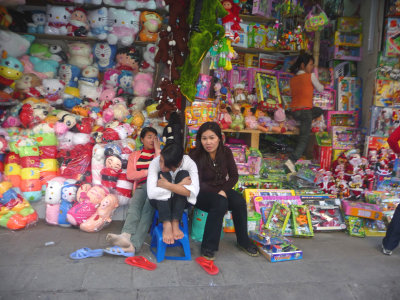
Close-up of Vietnamese merchants at a toyshop. |
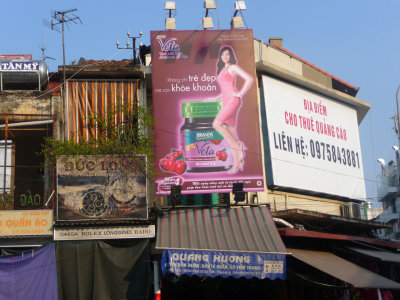
A Hanoi billboard. |
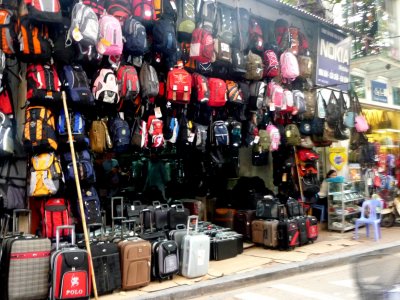
A backpack and luggage store in Hanoi's Old Quarter. |
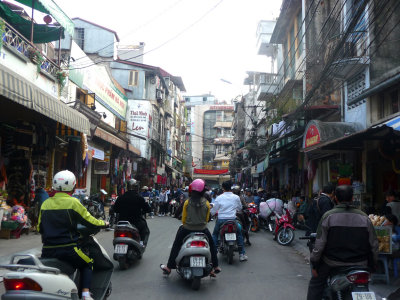
More motorbikes buzzing through Hanoi's crowded streets. |
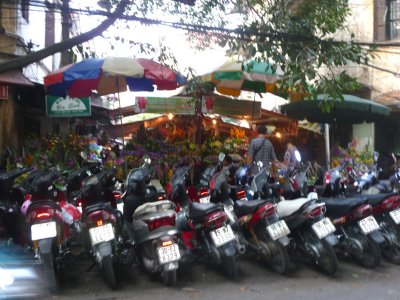
We passed by these parked motorbikes at the end of the cyclo ride. I never saw as many motorbikes as there are in Hanoi! |
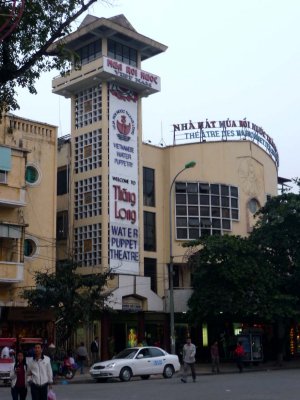
Thang Long Theater where a water puppet show is held. |
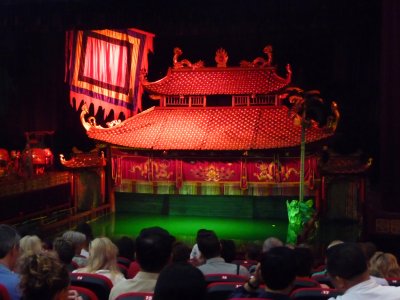
Water puppetry is a traditional art form distinctive to the culture of Vietnam. It was developed in the rice fields. |
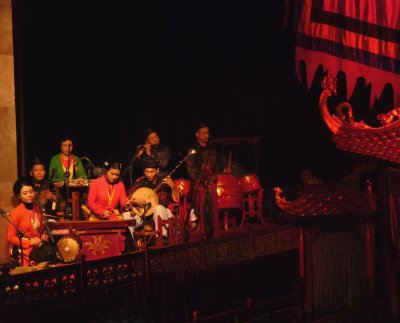
View of the musicians who provide the traditional Vietnamese music for the water puppet performance. |
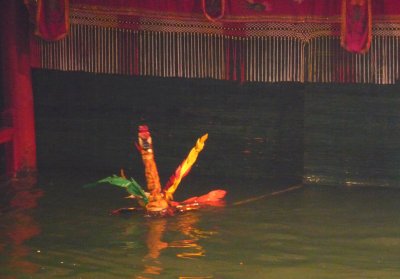
Wooden ducks, snakes, dragons and other animals are depicted in the show. The puppeteers are hidden behind a screen. |
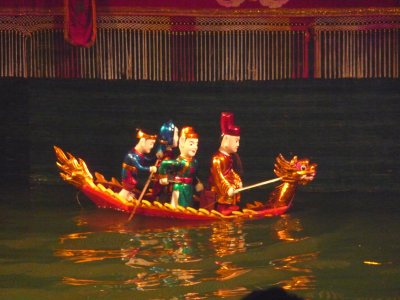
Puppets riding on a dragon boat. A large rod supports the puppets under the water and is manipulated by the puppeteers. |
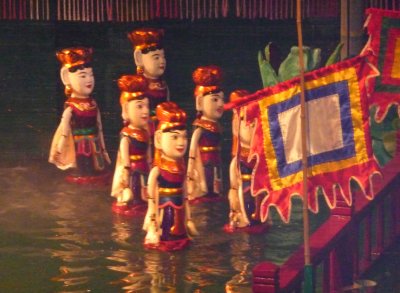
Some of the many puppets, which, in unison, appear to be moving over the water. |
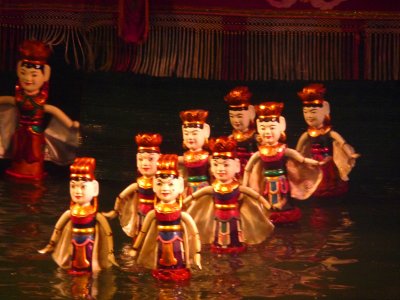
The puppets are made out of wood and then are lacquered. The shows are performed in a waist-deep pool. |
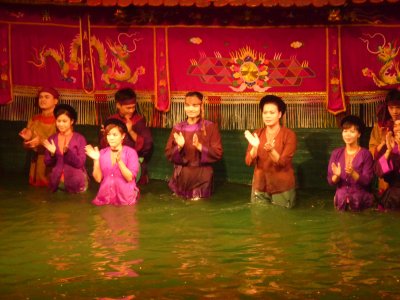
At the finale of the show, the puppeteers came out to receive a round of applause. |
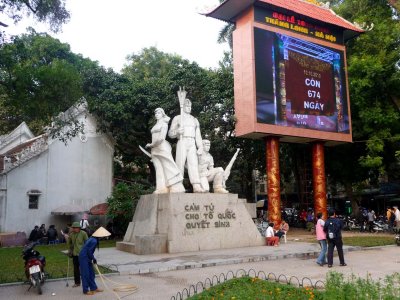
War memorial, which is across from the Ngoc Son Temple at Hoan Kiem Lake. |
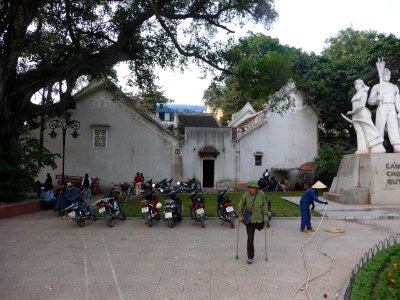
I wonder if this elderly amputee next to the war memorial is a veteran of the Vietnam War? |
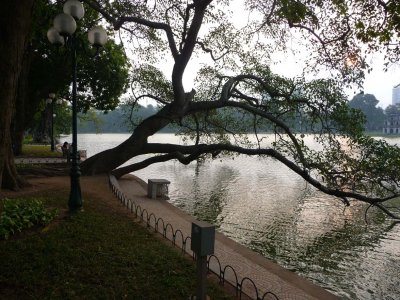
Hoan Kiem Lake, which is the center of Hanoi both literally and figuratively. The name means "Lake of the Returned Sword." |
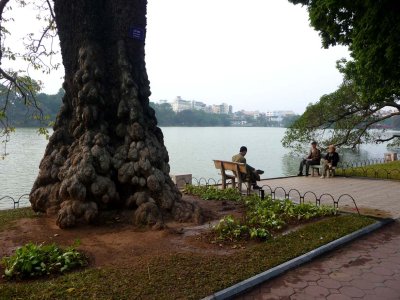
Legend is the emperor returned to the Golden Turtle God a magic sword that brought him victory against the Chinese Ming Dynasty. |
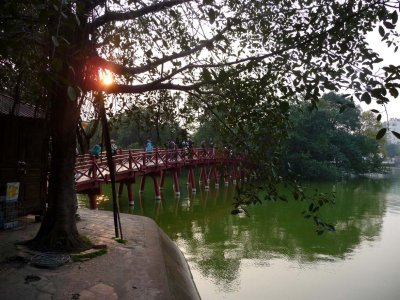
Hence, the lake got its present name. View of the beautiful wooden Huc Bridge at Hoan Kiem Lake. |
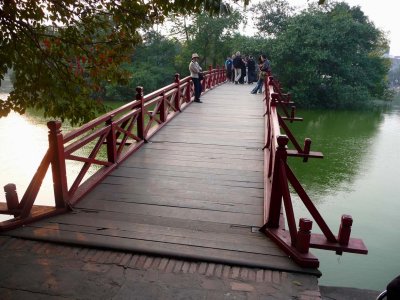
The Hoan Kiem turtle actually exists, but the giant turtle is near extinction with only a few left in the lake. |
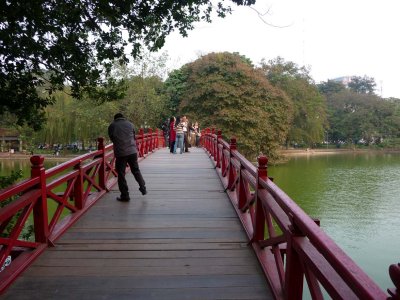
Strollers crossing over the Huc Bridge and the green water of Hoan Kiem Lake in Hanoi. |
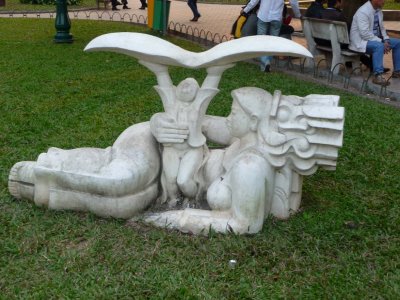
Interesting modern sculpture near the entrance to the Ngoc Son Temple. |
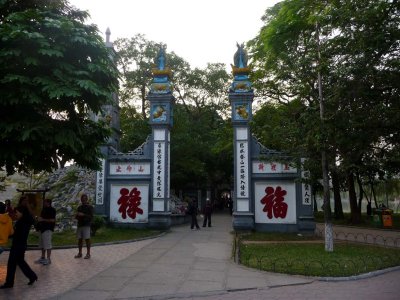
Entrance to the Ngoc Son Temple at Hoan Kiem Lake. |
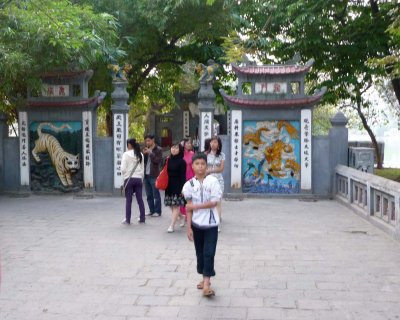
People coming and going at the Ngoc Son Temple entrance. |
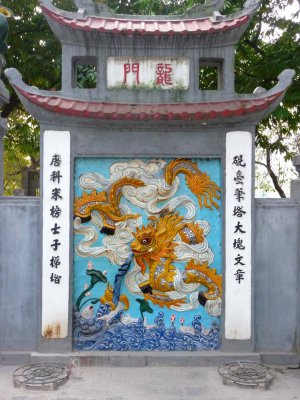
There were some beautiful murals at the entrance including this dragon mural. |
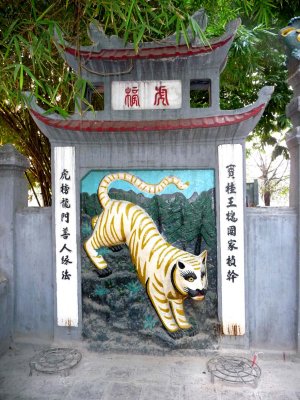
This tiger mural is also at the entrance to the Ngoc Son Temple at Hoan Kiem Lake. |
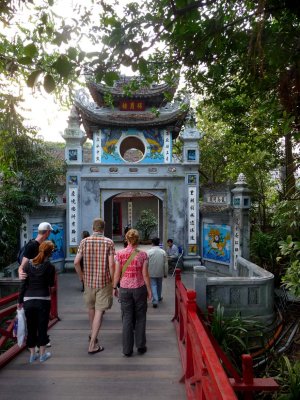
Pathway leading to the Ngoc Son Temple in Hanoi. |
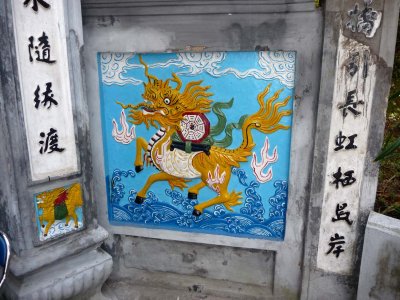
This Ngoc Son Temple mural looks like a cross between a unicorn and a dragon. |
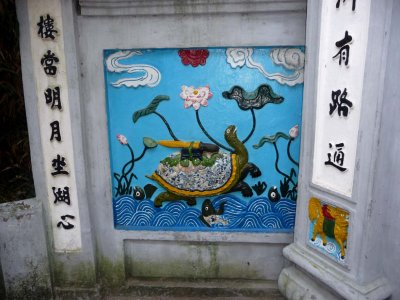
The other mural is a depiction of the Golden Turtle God with the magic sword based on the legend of Hoan Kiem Lake. |
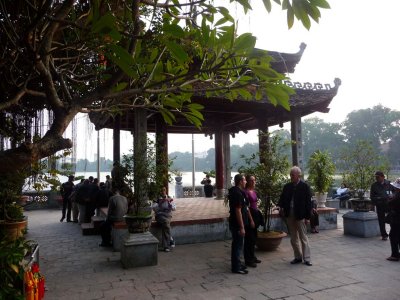
Beautiful Vietnamese-style gazebo in the Ngoc Son Temple grounds. |

The Ngoc Son Temple is dedicated to the emperor Tran Hung Dao who returned the magic sword to the Turtle God. |
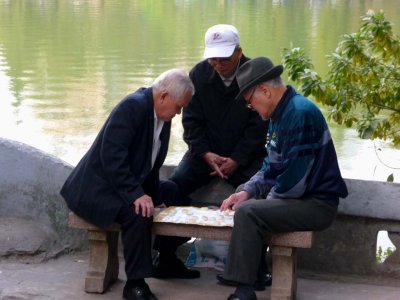
These old men were intently playing a game on the Ngoc Son Temple grounds. |
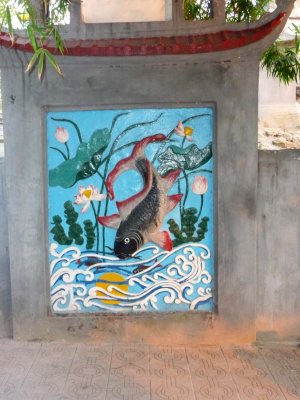
Another beautiful mural of a fish at the temple at Hoan Kiem Lake. |
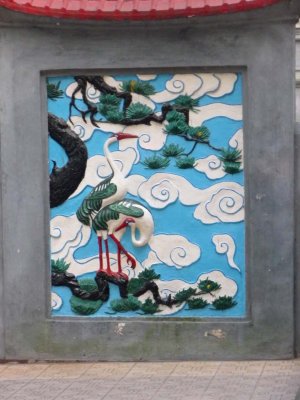
I think that this stork mural at the Ngoc Son Temple (I'm not a bird expert)! |
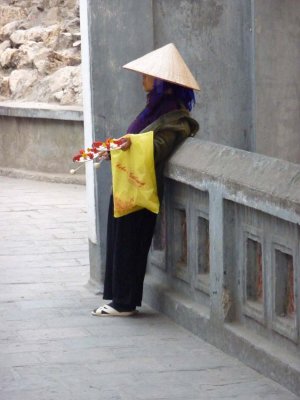
This Vietnamese woman seemed to be preoccupied in her thoughts. |
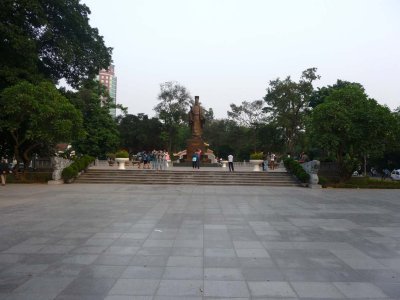
The Ly Thai To statue is located at Indira Gandhi Park, nearby Hoan Kiem Lake in Hanoi to commemorate the Vietnamese emperor. |
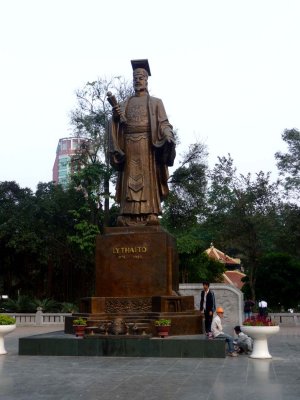
Statue of Ly Thai To (974-1028) was the founder and first emperor of Vietnamís Ly Dynasty (1009-1225). |
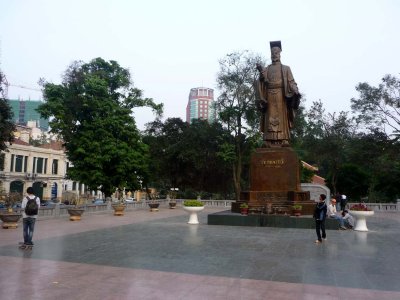
After ascending the throne, he moved the capital to Dai La (which he renamed as Thang Long), the present day Hanoi. |
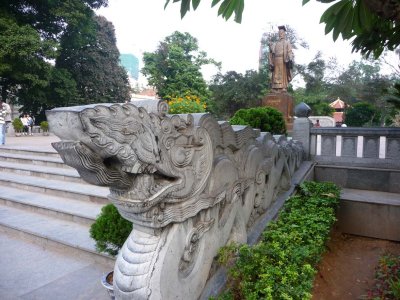
I liked this dragon sculpture at the entrance to Indira Gandhi Park. |
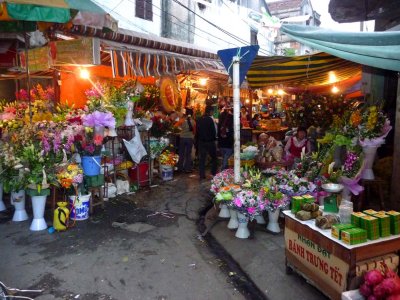
Outdoor market that I passed while walking in Hanoi (I was looking for an electronics street in Hanoi to buy a laptop battery). |
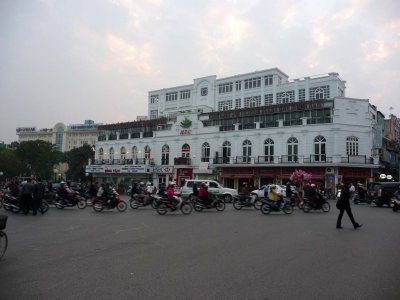
I walked across this wide square in Hanoi taking my life into my hands with all the motorbike traffic! |
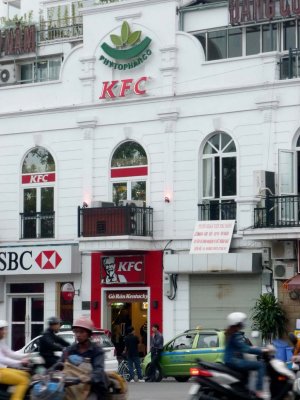
I couldn't resist taking a photo of this KFC in Hanoi. The Colonel is popular there! |
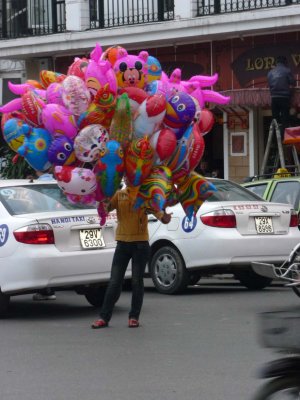
On my trek to find buy a laptop battery, I spotted this balloon vendor in Hanoi. |
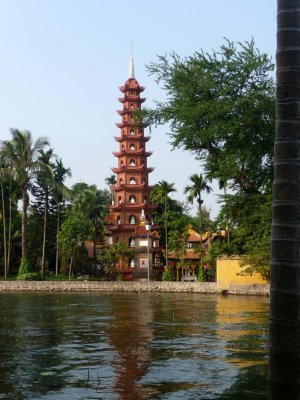
View of the Tran Quoc Pagoda, which is the oldest of all pagodas in Hanoi. It is located beside the dazzling West Lake in Hanoi. |
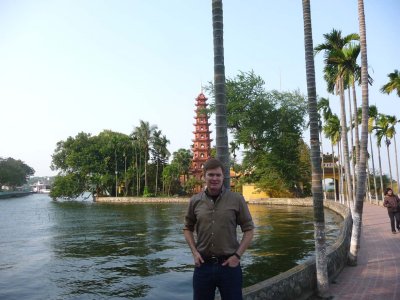
Me posing in front of the Tran Quoc Pagoda and West Lake. |
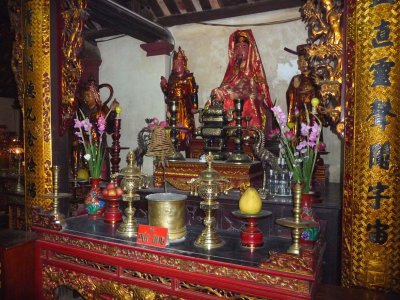
One of several Buddhist shrines that were on display in the Tran Quoc Pagoda. |
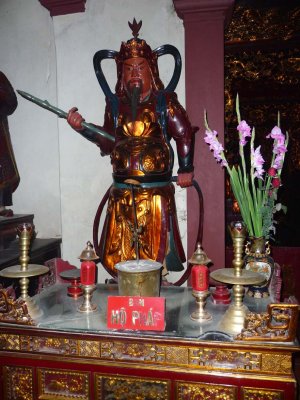
Close-up of an ancient Vietnamese warrior statue at the pagoda. |
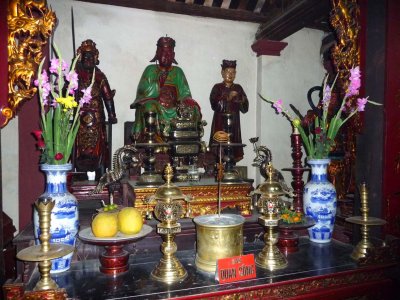
A Buddhist shrine with painted wooden artifacts on display. |
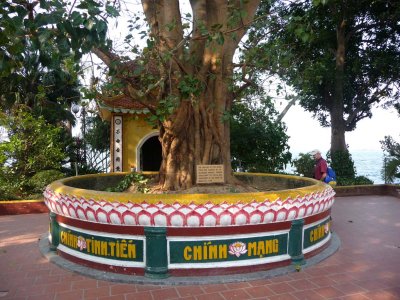
In 1959, on his visit to Vietnam, Indian Prime Minister Razendia Prasat gave this (holy) Bodhi tree to the pagoda as a gift. |
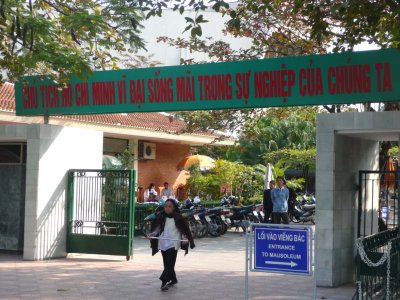
Entrance to the Tomb of Ho Chi Minh located Ba Dinh Square, the place where Ho read the Declaration of Independence in 1945. |
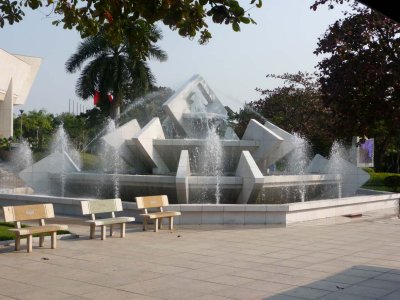
Fountains at the Tomb of Ho Chi Minh. |
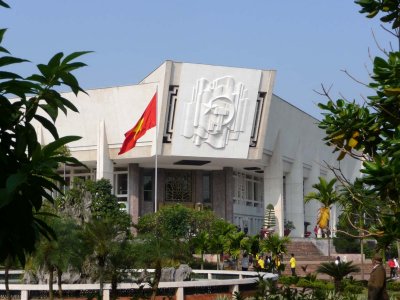
Ho Chi Minh Museum, which is located next to this tomb. |
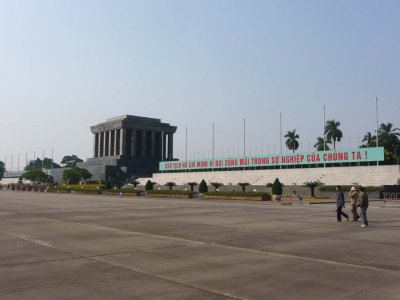
Another view of the mausoleum, which was inspired by Lenin's Mausoleum in Moscow. |
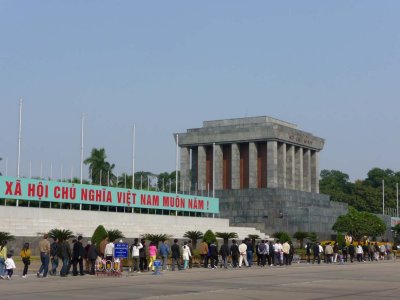
Exterior view of people lining up to go into Ho Chi Minh's mausoleum (I'm 4th from the back in that line). |
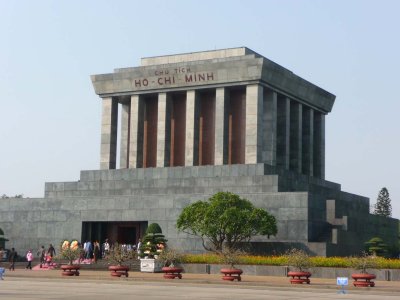
Made of gray granite, distinct Vietnamese architectural elements were added such as the sloping roof. |
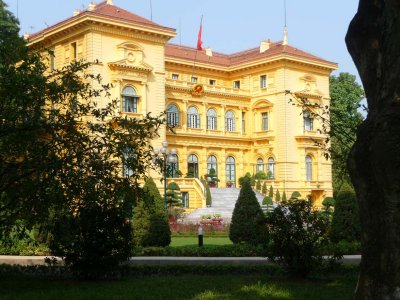
Nearby Ho Chi Minh's tomb is this house that he lived in, built in a French colonial style. |

This is one of Ho Chi Minh's cars. You can see a reflection of me in the window! |
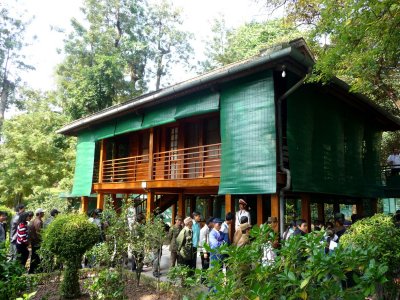
Ho Chi Minh preferred this smaller (stilt) house since he liked a simpler lifestyle. It is reminiscent of Frank Lloyd Wright. |
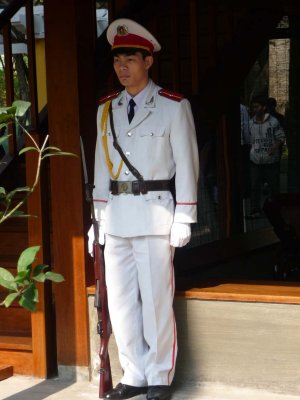
This soldier was guarding the Ho Chi Minh stilt house. |
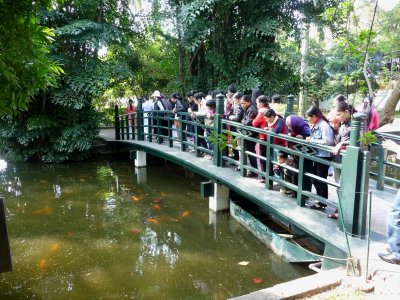
Next to the smaller Ho Chi Minh house is this fishpond and bridge. |
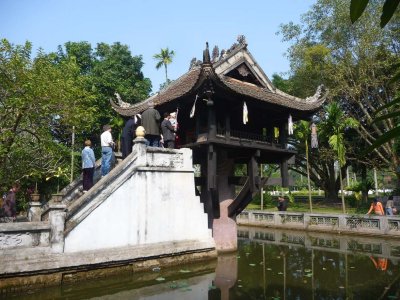
This small pagoda is on the grounds of the Ho Chi Minh tomb. |

At the base of the stairs of the pagoda is this stone dragon carving. |
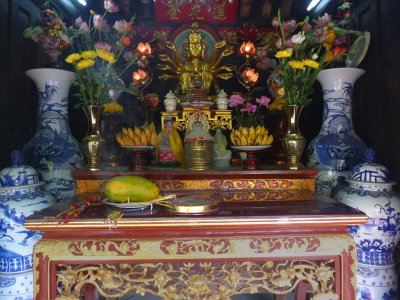
This Buddhist alter is inside the pagoda. |
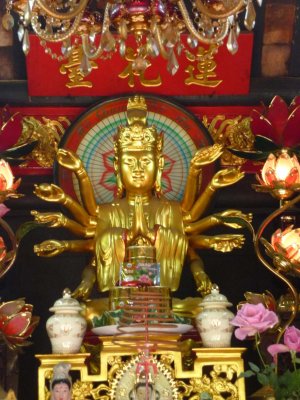
Close-up of the golden multi-armed Buddha inside of the pagoda. |
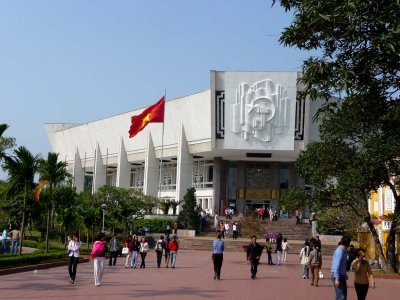
Entrance to the Ho Chi Minh Museum, which is located next to his tomb. |
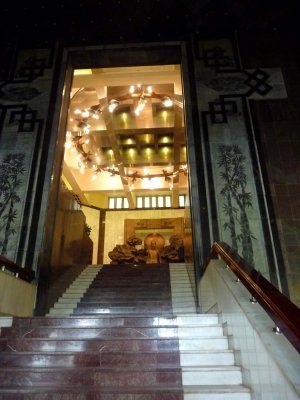
Dramatic image of Ho Chi Minh's imposing statue at the top of the stairs in his museum. |
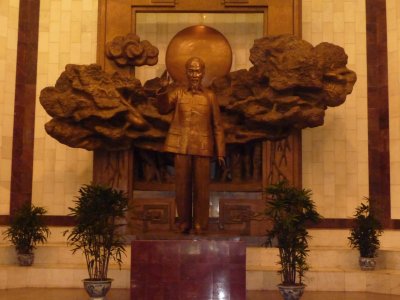
Interior view of the statue with Ho Chi Minh's arm raised to salute the Vietnamese people. |
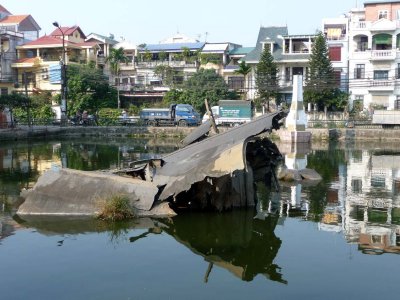
Wreckage in Huu Tiep Lake where a U.S. B-52 bomber was shot down during the 1972 Christmas bombing of Hanoi. |
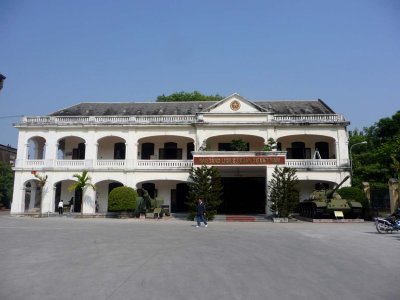
View of the Vietnam National Military Museum in Hanoi, which exhibits war relics from the Vietnam War. |
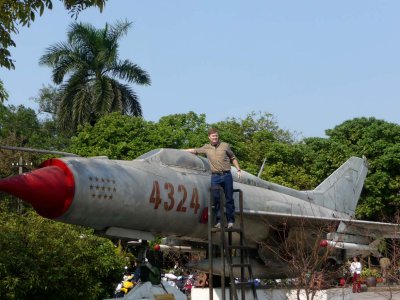
Me posing next to a MIG fighter plane used during the Vietnam War. |
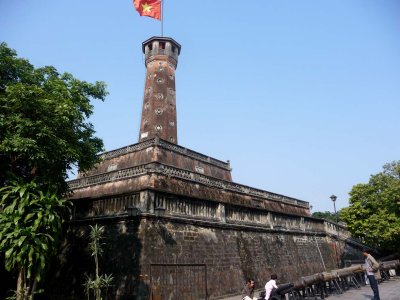
This ancient tower with a Vietnamese flag on the grounds of the museum was built between 1805-1812. |
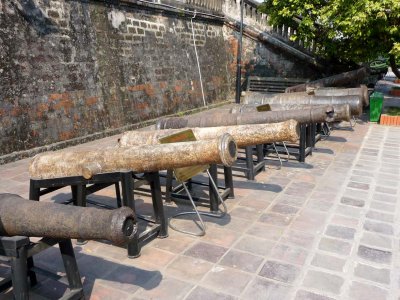
Vietnamese canons on display at the Vietnam National Military Museum. |
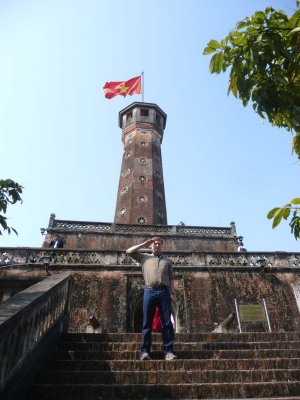
Me saluting in front of the ancient tower. |
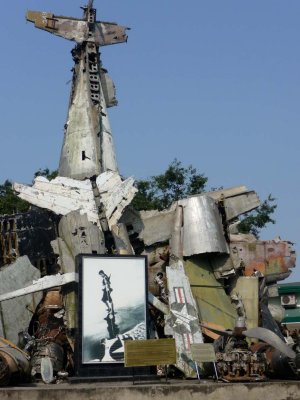
Wreckage of a U.S. bomber that was shot down during the Vietnam War. |
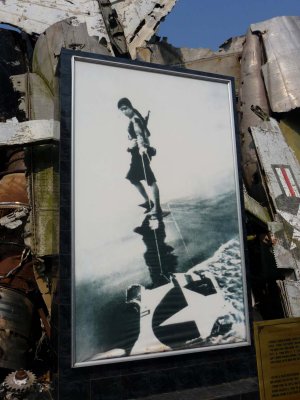
This photo shows a Vietnamese woman dragging a piece of the wreckage. |
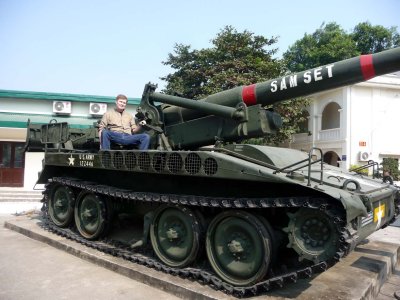
Me sitting on a Vietnam era U.S. tank. |
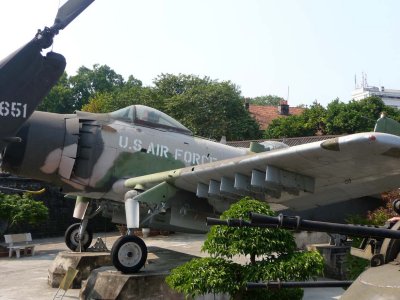
A U.S. Air Force propeller plane used during the Vietnam War. |
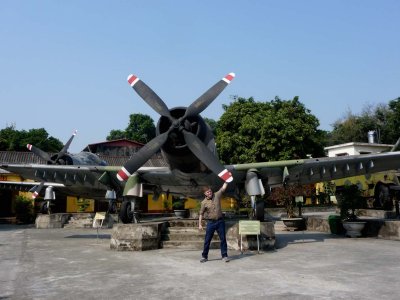
Here I am getting ready to start her up! |
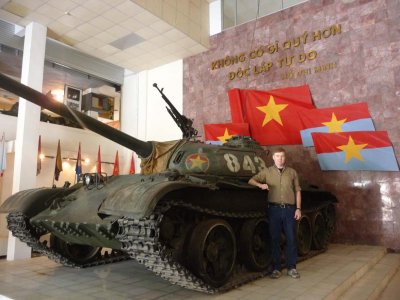
Me posing in front of the North Vietnamese tank that seized the Saigon Presidential Palace in 1975. |
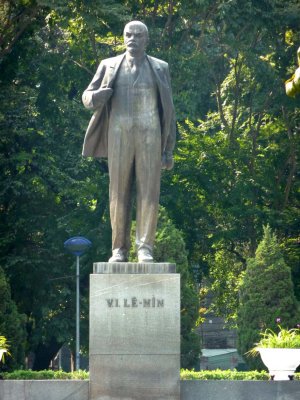
This statue of Lenin is across from the Vietnam National Military Museum. They now call themselves a socialist country. |
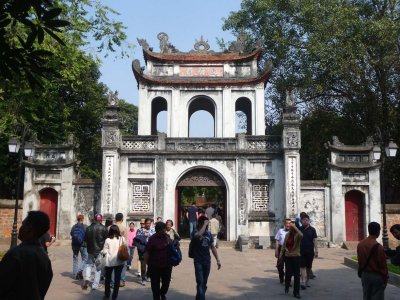
The front gate of the Quan Thanh Temple in Hanoi. The temple is dedicated to Saint Tran Vu. |

The three ancient Chinese characters, which can still seen today on the top of the entrance to the temple mean Tran Vu Quan. |
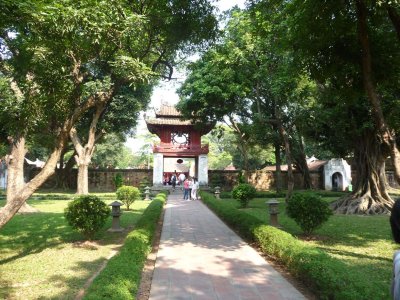
Temples are places for worshipping saints while pagodas are dedicated to Buddha. |
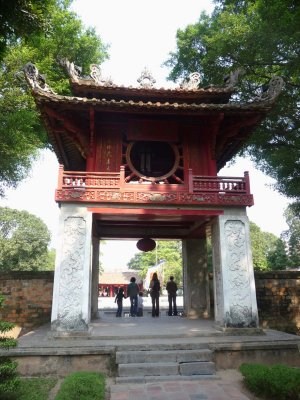
This is the entrance to the front courtyard of the temple. |
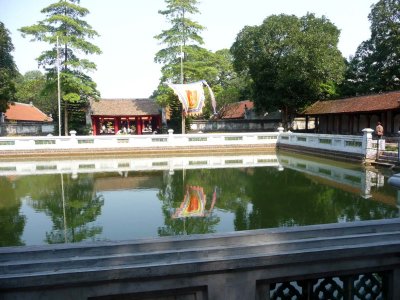
This large goldfish pond greets you as you walk into the yard. |
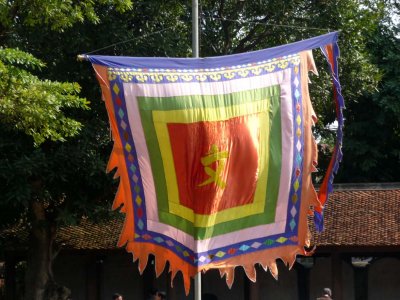
This colorful banner was on display over the goldfish pond. |
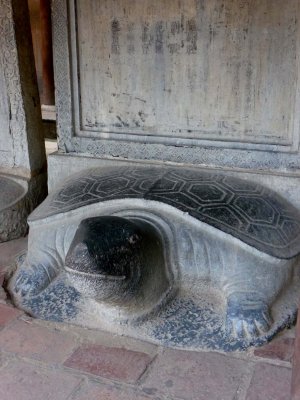
A turtle carving in the temple. It is Buddhist symbol that can signify longevity. |
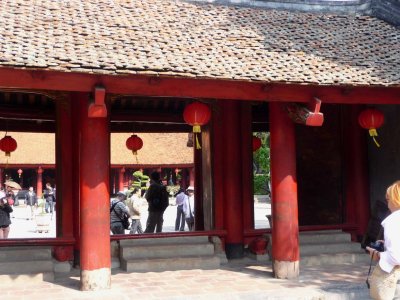
Interior structure of the temple. Quan Thanh Temple was built during the reign of King Ly Thai To (1010-1028). |
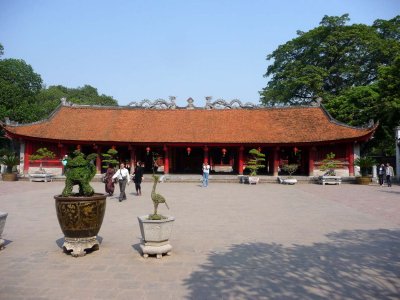
View from a courtyard of the temple structure. |
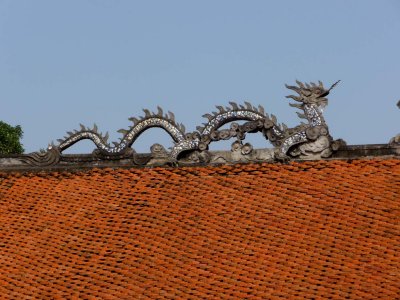
Interesting dragon sculptures are on the roof. |
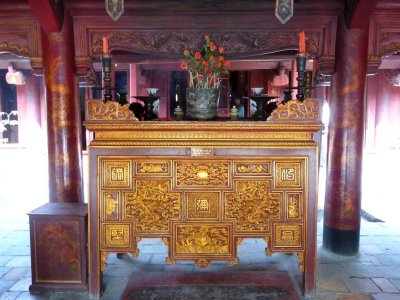
One of many shrines inside the temple. |
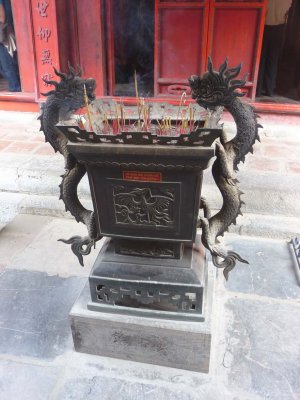
This dragon-carved incense burner is used for burning religious incense. |
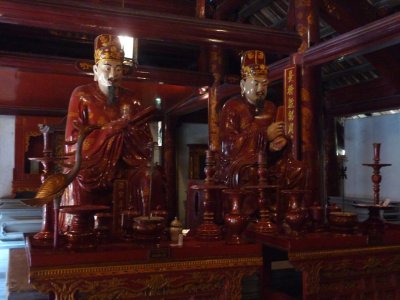
Some intricate wooden carvings inside of the temple. |
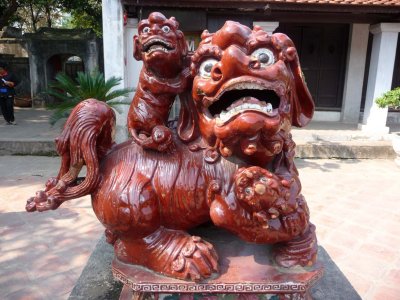
A mother unicorn and her baby. |
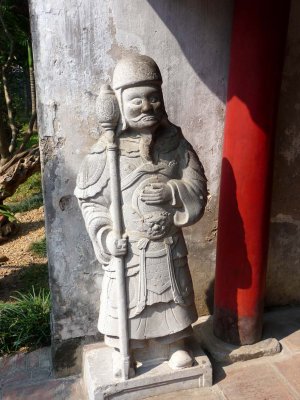
A stone Vietnamese warrior inside the Quan Thanh Temple. |
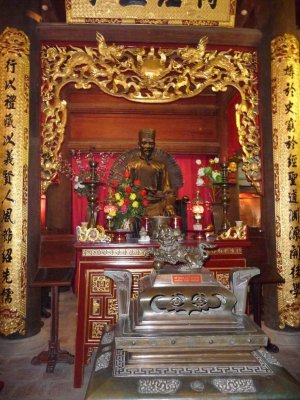
A shrine inside of the temple (to Saint Tran Vu, perhaps). |
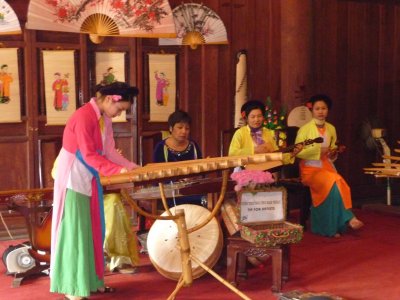
These women performed for us at the Quan Thanh Temple. |
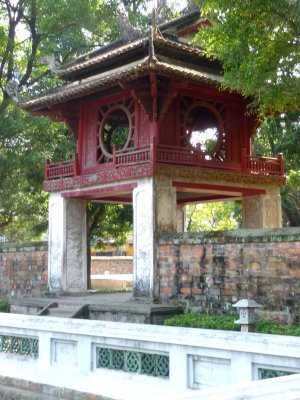
A guard tower inside of the temple grounds. |
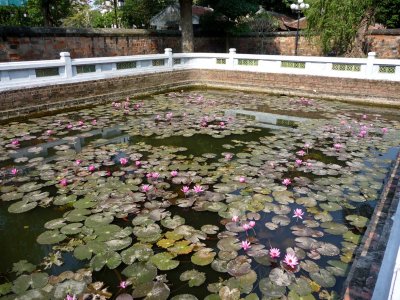
A lily pond at the Quan Thanh Temple. |
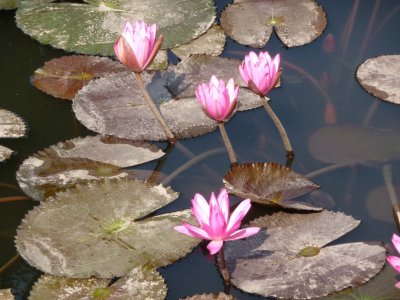
Close-up of the lilies. |
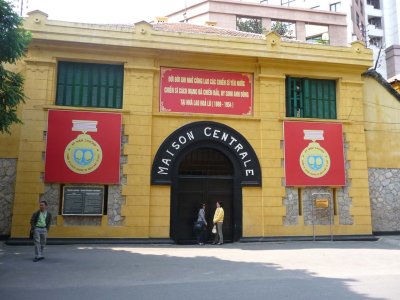
Entrance to the Hanoi Hilton, used by North Vietnam for prisoners of war during the Vietnam War. |
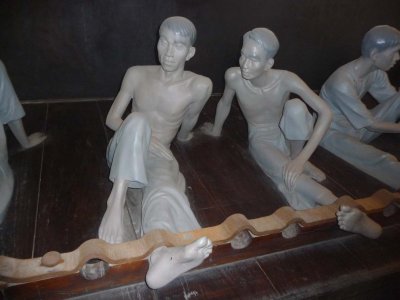
Conditions were horrible in the Hanoi Hilton. This is a depiction of soldiers shackled together in one big room. |
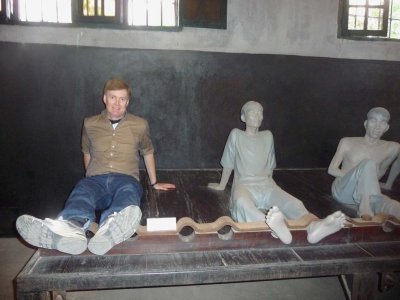
I am the latest prisoner at the Hanoi Hilton! |
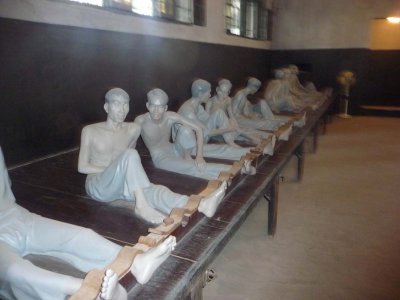
Another view of the long line of shackled prisoners. |
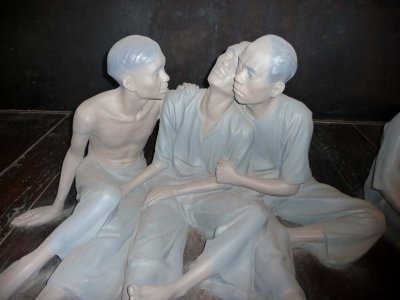
Close-up showing the misery of the prisoners. |
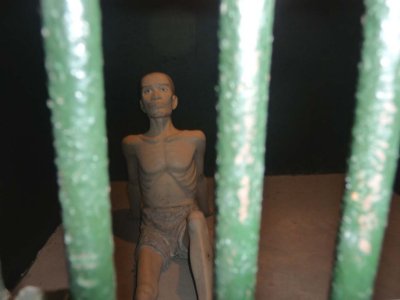
Depiction of a prisoner alone in his cell. |
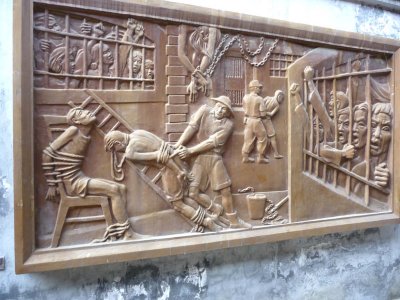
These 3-dimensional works shows the brutality of life and inhumanity in the Hanoi Hilton. |
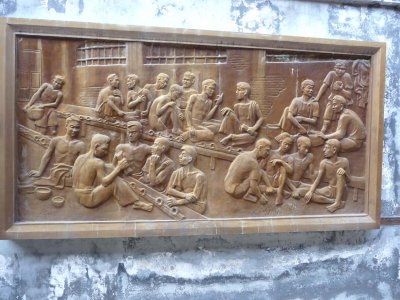
Another 3-dimensional work showing the misery of prison life. |
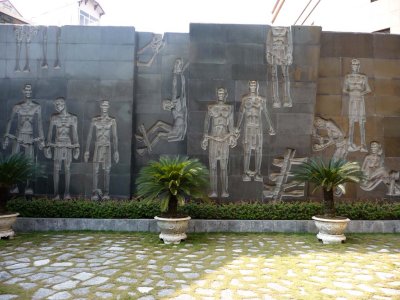
An outdoor mural depicting some of the Hanoi Hilton's prisoners. |
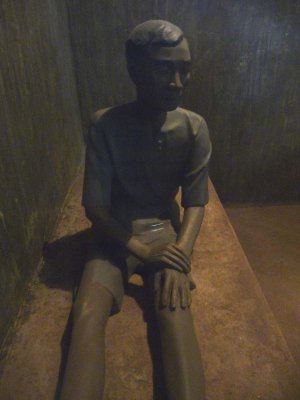
Depiction of a prisoner in solitary confinement. |
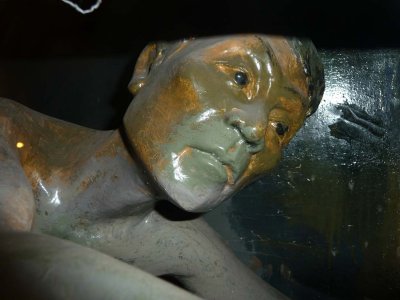
The face of misery of prisoner in solitary confinement. |
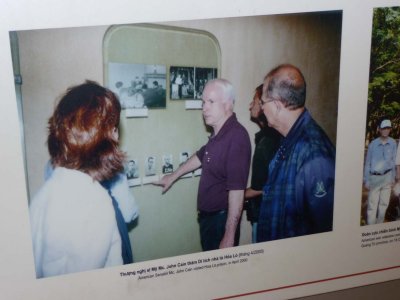
John McCain visited the Hanoi Hilton in 2000. He was one of 300 U.S. pilots held there during the Vietnam War. |
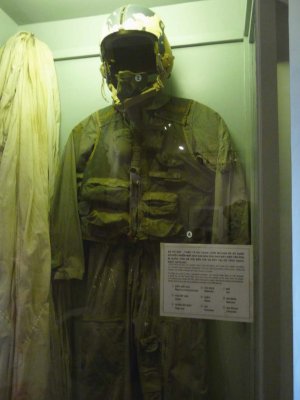
This is the flight suit that John McCain wore when he was shot down over Hanoi in 1967. He was released in 1973. |
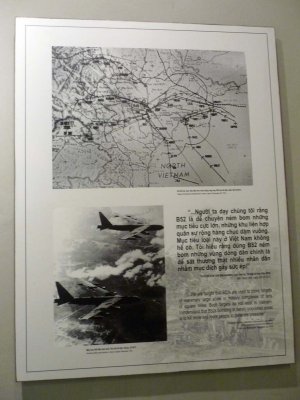
Photos of U.S. B-52 bombers on a bombing run over Vietnam. |
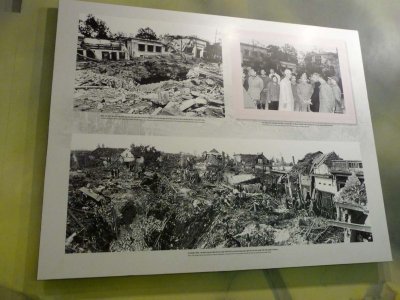
Photos showing the destruction in Hanoi after the 1972 Christmas bombing by U.S. B-52s. |
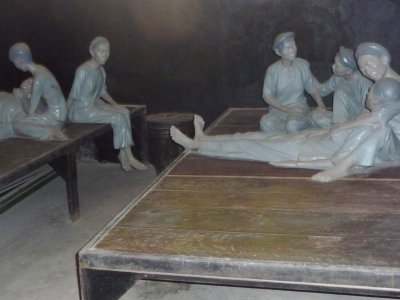
Depiction of the "women's ward" at the Hanoi Hilton. |
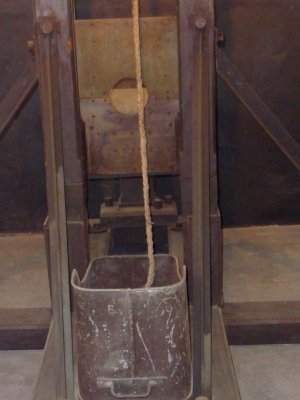
There is also a guillotine, which they call a "head cutting machine," where many revolutionary fighters were beheaded. |

Painting showing men being whipped at the Hanoi Hilton. |
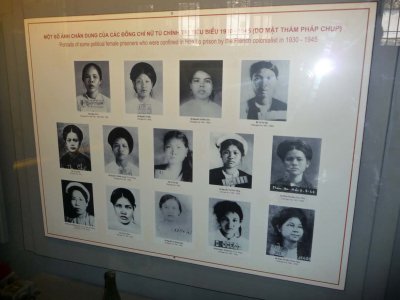
Photographs of women prisoners at the Hanoi Hilton. |
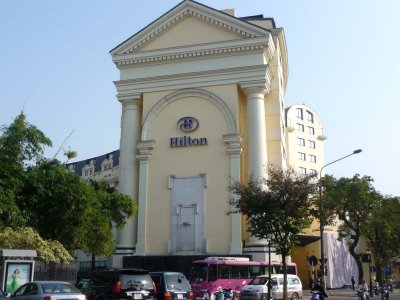
It's appropriate that I show you the real Hanoi Hilton (Opera) Hotel that is next to the Hanoi Opera House. |
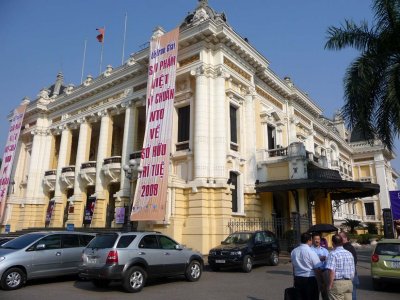
View of the French-colonial style Hanoi Opera House, which was built by the French between 1901 and 1911. |
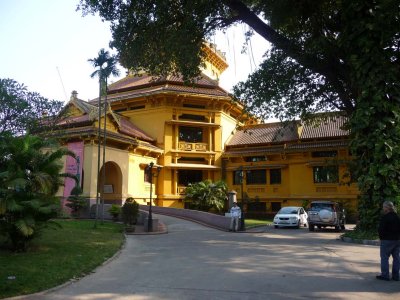
Entrance to the French-colonial style National Museum of Vietnamese History. |
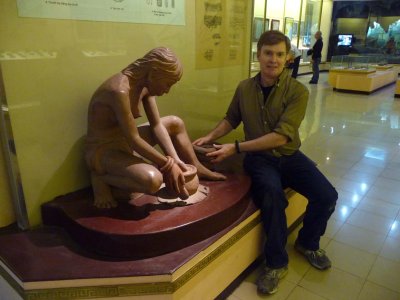
Me pretending to make pottery with this replica of an ancient Vietnamese woman. |
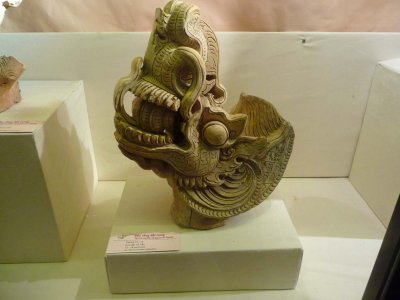
A wonderful wooden carving of a dragon's head in National Museum of Vietnamese History. |
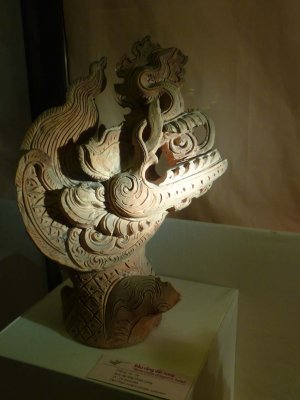
Another wooden carving of a dragon's head. I have a thing for them! |
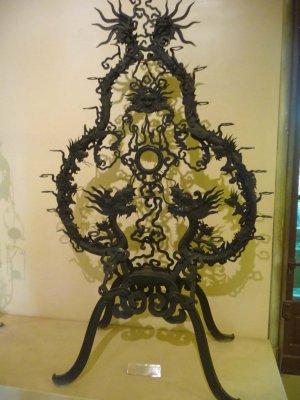
Some amazingly intricate iron work of art in the museum. |

This stone-carved creature with wings appears to be eating a snake. |
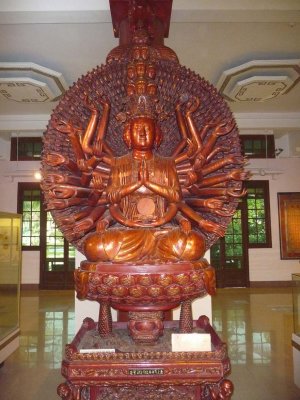
An intricate wooden carving of a Buddha with dozens of arms. |
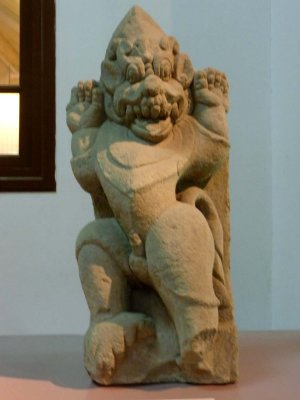
This surprised looking creature is obviously male! |
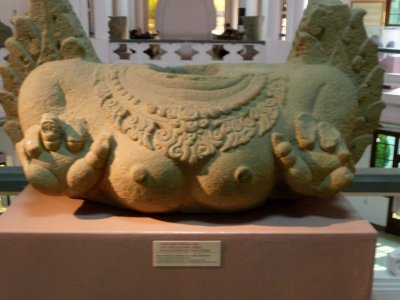
This bustline on display at National Museum of Vietnamese History is obviously female! |
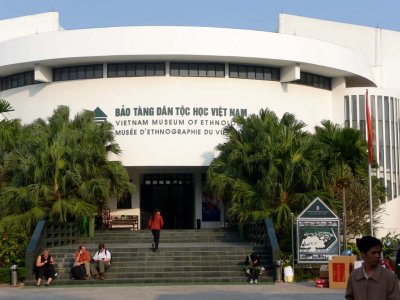
Entrance to the Museum of Ethnology in Hanoi which showcases cultures and customs of Vietnam's 54 recognized ethnic groups. |
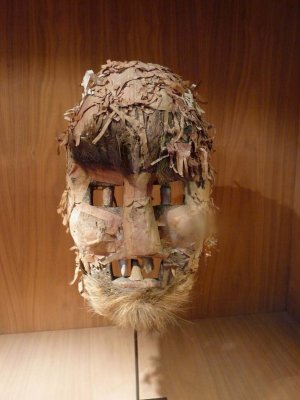
An interesting mask made by one of Vietnam's diverse ethnic groups. |
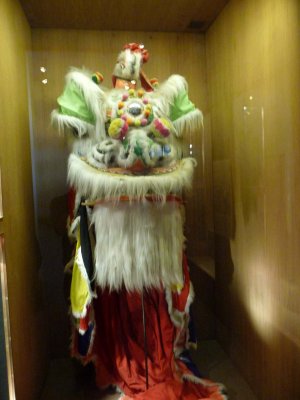
This unusual ethnic costume on display was probably used for some kind of ritual. |
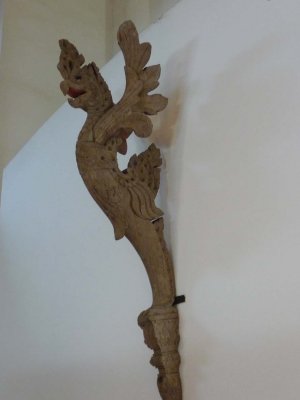
Part of the museum's collection of ethnic folk art. |
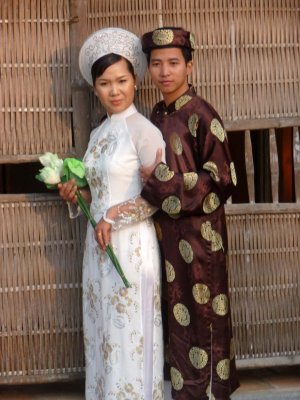
The Museum of Ethnology is a popular spot for wedding photos such as of this young couple. |
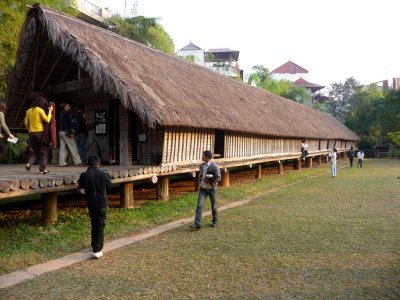
The museum has exhibits of traditional architecture of Vietnamís ethnic tribes including this Ede tribeís long house. |
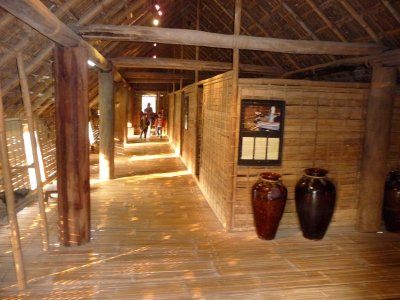
Interior of the Ede tribeís long house. It is made of bamboo. |
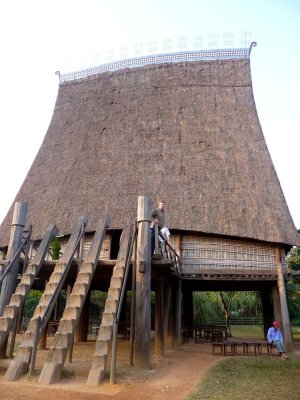
This elevated Bahnar Rong house is on display at the museum, along with other traditional houses of various ethnic minorities. |
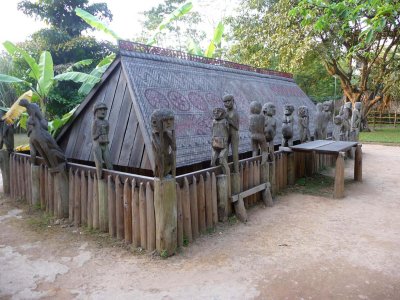
An interesting tomb design of the Giarai (or Jarai) tribe, an ethnic group based primarily in Vietnamís Central Highlands. |
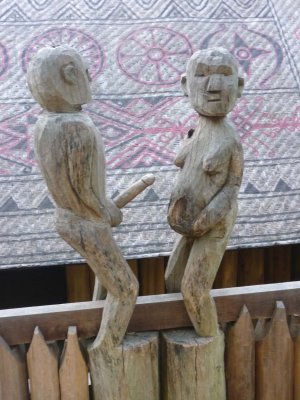
I can add nothing to this photo! |
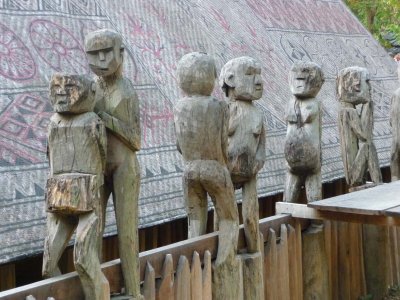
The most prominent feature of a traditional Giaraiís tomb is the wooden sculptures of sexually explicit men and pregnant women. |
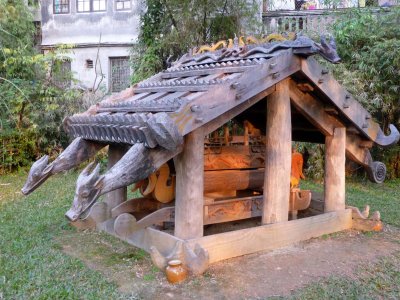
Tomb for the rich and high-ranking people in the Cotu society at the Museum of Ethnology in Hanoi. |
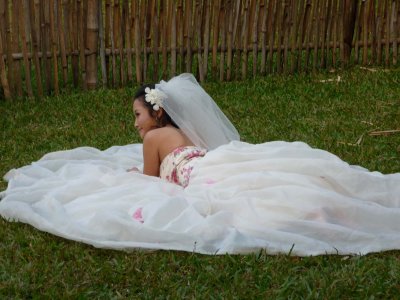
As we left the museum, this woman was posing for wedding photos. |











